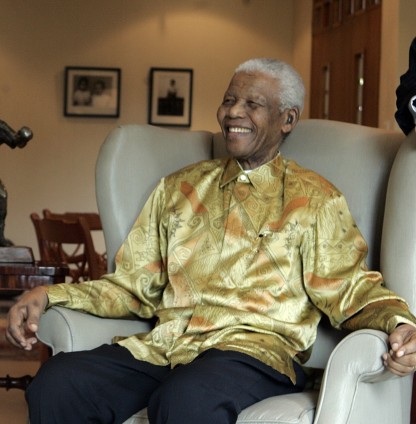One awesomes sauce tool for forging connections with your audience is effective storytelling. With stories, you have the ability to captivate, engage, and resonate with people, thereby creating a meaningful connection that can leave a lasting impression. To demonstrate how to effectively use storytelling to connect with your audience, it’s helpful to look at examples of their ineffective use as well as their correct use.
Ineffective Use of Stories & Anecdotes
Everyone makes mistakes. Let's learn from these 3 examples of the ineffective use of stories and anecdotes:
Hillary Clinton's "Basket of Deplorables" Speech (2016)


Photo by Gage Skidmore
During the 2016 U.S. presidential campaign, Hillary Clinton used a story about supporters of Donald Trump, referring to them as a "basket of deplorables." This anecdote was intended to critique and dismiss Trump's followers. However, it backfired as the comment was perceived as condescending and alienated a significant portion of the electorate. The story created a negative impression and had a detrimental impact on Clinton's campaign.
Tony Hayward's BP Oil Spill Apology Speech (2010)


Following the Deepwater Horizon oil spill in the Gulf of Mexico, then-BP CEO Tony Hayward delivered a public apology speech. In an attempt to empathize with affected communities, he shared an anecdote about wanting his life back and going sailing. This ill-timed and insensitive story drew criticism as it seemed disconnected from the severity of the disaster and the suffering experienced by those affected. The anecdote undermined Hayward's credibility and showed a lack of understanding and empathy.
Mitt Romney's "47 Percent" Speech (2012)


During a private fundraising event in 2012, then-presidential candidate Mitt Romney made a speech where he referred to 47 percent of Americans as being dependent on government support and not taking personal responsibility. This anecdote, captured on video and later leaked to the public, caused significant controversy. It was perceived as an elitist and dismissive remark, alienating a large segment of the population and damaging Romney's campaign.
Effective Use of Stories & Anecdotes
In contrast, here are 3 examples of effective storytelling to connect with your audience.
Barack Obama's 2004 Democratic National Convention Keynote Address


(Official White House Photo by Pete Souza)
Barack Obama delivered a captivating keynote address at the 2004 Democratic National Convention. He shared personal anecdotes about his background, upbringing, and experiences. By weaving his own story into the broader narrative of America, he effectively connected with the audience and inspired hope for a united future.
Sheryl Sandberg's 2010 TED Talk on "Why We Have Too Few Women Leaders"


Sheryl Sandberg, the COO of Facebook and author of "Lean In," gave a powerful TED Talk addressing the lack of women in leadership positions. Throughout her speech, she incorporated personal anecdotes and stories from her own journey as a female executive. By sharing relatable experiences and challenges, she resonated with the audience, inspired women to pursue leadership roles, and called for societal change.
Nelson Mandela's Inaugural Address (1994)


Nelson Mandela, the iconic South African anti-apartheid activist and former President, delivered a moving inaugural address after being elected as the country's first black President. In his speech, he used personal anecdotes and stories to illustrate the struggles and sacrifices of the people of South Africa. By intertwining his own experiences with the collective history of the nation, he created a profound connection and conveyed messages of unity, forgiveness, and reconciliation.
What can you take away from these 6 examples? In each example, your most important takeaways are as follows:
- Do your research about your audience so that you understand them and can avoid alienating them with any insensitivities.
- Be cautious of using any stories where you are criticizing people.
- Tell stories that either mirror the experiences of the audience or that they can relate to.
As you can see, understanding your audience is probably the most important task to be an effective storyteller. It's crucial to understand who they are. Conduct thorough research as to their interests, preferences, and values. By understanding their needs and desires, you can tailor your stories to align with their expectations and resonate with them on a personal level.
What’s so interesting about storytelling is that there are as many tips for great storytelling as there are tips for what to avoid when using stories. Let’s start with what to avoid – always more fun!!
What to AVOID for Effective Storytelling:
- Avoid going off on tangents! Stay focused on the main message or objective of your storytelling and avoid unrelated or lengthy digressions!!
- Don't make the story all about yourself!! While personal anecdotes can be powerful, ensure that your stories are relatable and resonate with your audience. Avoid self-centered storytelling that doesn't consider the audience's perspective.
- Avoid overly long or detailed stories!! Keep your stories concise and impactful. Long-winded or excessively detailed narratives can cause your audience to lose interest or detract from the main message.
- Don't overwhelm with irrelevant details!! Choose relevant details that enhance the story and support the main message. Avoid including unnecessary or confusing information that may distract or confuse your audience.
- Avoid insensitive or controversial stories! Be mindful of the potential impact of your stories. Steer clear of stories that could be offensive, controversial, or alienating to your audience.
- Avoid a lack of structure. Ensure your stories have a clear structure with a beginning, middle, and end. A well-structured narrative helps maintain engagement and clarity.
- Don't overlook audience engagement. Remember to actively engage your audience during storytelling. Avoid simply delivering a monologue! Encourage interaction, ask questions, and create opportunities for audience participation.
Tips for Effective Storytelling
- Know your audience. Understand the interests, values, and needs of your audience. Then tailor your stories accordingly. Do your research!
- Craft a compelling narrative. Structure your story with a clear beginning, middle, and end to engage your audience from start to finish. Create a visual of your story by using descriptive words and phrases (the sky was a clear blue, everyone was staring at me, etc.).
- Use emotions and visual and sensory details. Evoke emotions through your storytelling to create a deeper connection and resonance with your audience. For example, “I was so embarrassed, my face turned beet red.” Incorporate visuals, descriptive language, and sensory details to make your stories more vivid and engaging.
- Be authentic. Share genuine stories that reflect your own experiences or those of relatable characters to establish trust and authenticity.
- Keep it relevant. Ensure that your stories align with your main message or objective to maintain focus and maximize impact. Stay on point!
- Practice timing and pacing. Control the pace of your storytelling, using pauses and emphasis strategically to build anticipation and highlight key points.
- Encourage audience participation! Engage your audience by inviting them to participate in the story through questions, reflections, or interactive elements. For example, ask, “What would you do if you were faced with this situation?” Or ask something similar whether or not the audience answers.
- Provide value. Make sure your stories offer something valuable to your audience, whether it's inspiration, education, or entertainment.
- Practice and refine. Most importantly, practice your storytelling to improve delivery, timing, and the overall impact of your stories.
Lastly, it’s helpful to examine how best to use stories for different types of presentations.
Sales Presentations
When giving a sales presentation, incorporating storytelling can help you connect with potential customers on an emotional level. For example, if you're selling a fitness product, you can share one or more stories about how the product helped you or someone else to overcome a fitness challenge to achieve a fitness goal. By sharing relatable experiences, you build trust and demonstrate the value of your product or service.
Team Meetings
In team meetings or company gatherings, storytelling can be used to foster a sense of camaraderie and motivate team members. For instance, you can share a story about a team member who went above and beyond to achieve success or overcame a significant obstacle. By highlighting their efforts and demonstrating the impact of teamwork, you create a shared experience that connects, engages, and inspires.
Training Workshops
When conducting training workshops or educational sessions, storytelling can make concepts more relatable and memorable. For example, if you're teaching organization principles, you can share a story about how organization caused the transformation of someone’s life. By illustrating real-life scenarios, you engage participants and provide practical insights that they can apply to their lives.
Presentations at Community Events
If you're speaking at a community event or local gathering, incorporating storytelling can help you connect with the audience and convey your message effectively. For instance, if you're advocating for a cause, share personal stories or anecdotes that demonstrate the impact of the issue at hand. By making the issue relatable and connecting it to the experiences of the audience, you increase their understanding and engagement with your cause.
Narrative Magic: Your Turn to Share and Inspire
Storytelling is more than just a tool; it's the heartbeat of effective communication. It bridges the chasm between speaker and listener, creating a shared journey of emotions, ideas, and vision. From the triumphs of Nelson Mandela to the candid insights of Sheryl Sandberg, the stories shared here prove the unparalleled power of genuine narratives to engage, inspire, and leave a mark.
But as with any art, there are stories that soar and stories that falter. Avoiding the pitfalls while harnessing the strengths is crucial. Whether it's a sales pitch, a team meeting, or a community event, your story can be the difference between mere words and lasting impact. So, next time you step onto that stage, remember to weave a tale that resonates, one that fosters connection and drives home your message.
But now, it's your turn. What stories have moved you? Or better yet, what story will YOU tell? Share your insights and tales below, and let's continue this dance of narratives together.

